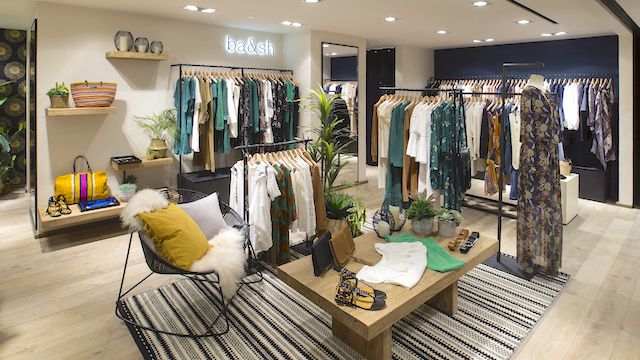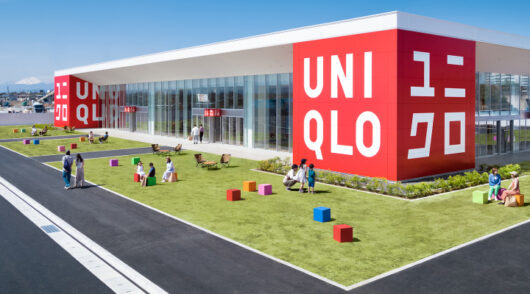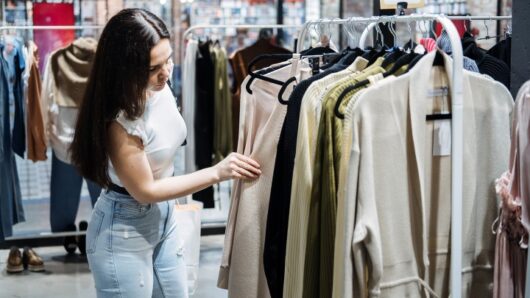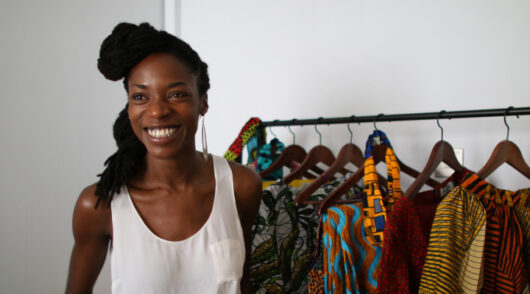Affordable luxury – the fastest-growing fashion retail category in Hong Kong – may have had its roots in the US, but the concept is gaining extra credibility from the arrival of French brands, broadening the offer and taking the design closer to the famous catwalks of Paris.
Affordable luxury blends the best of luxury – fashionable, quality products made with attention to detail, plus strong press, social media and event visibility, and high service levels – with the best of fast-fashion retail, a distribution model where the brand retains full control of the supply chain to offer a quick transition from catwalk to store shelf with fast stock replenishment.
It is hard to precisely pinpoint when affordable luxury was born, but more than one retail commentator has credited Jenna Lyons of J.Crew as giving it a truly commercial profile in North America. She led the transformation of the once-preppy US fashion brand with “creative vision and personal style”, to quote Fast Company writer Elizabeth Segran. Lyons was CEO of J.Crew for the final nine of her 26 years with the company.
“Lyons helped position J.Crew as an ‘affordable luxury’ brand, a model that many of today’s successful startups, including Everlane and Cuyana, have adopted,” wrote Segran.
“In 2011, Lyons spearheaded the ‘J.Crew goes to Italy’ campaign, showing consumers how the company makes products in Italian mills and shoe workshops, but was able to sell these well-crafted products at affordable price points. At $140 for a pair of shoes and $120 for a crisp shirt, luxury shoppers felt they were getting a bargain while aspirational shoppers felt that they could stretch their budgets to buy one of these coveted items.
“In many ways, this was the forebear to the ‘direct-to-consumer’ model – a buzzword in the fashion industry today that refers to selling high-quality products at affordable price points because there are no middlemen in the supply chain.”

Inspiration
Segran says J.Crew inspired an entire generation of fashion entrepreneurs just entering the market. One of them was Amanda Carye, the founder of shoe startup Idoni, which makes shoes in Italy and sells them online to US consumers.
“J.Crew suddenly made Italian luxury affordable and accessible to Americans,” Carye told Segran early last year.
Hong Kong-based Isolde Andouard, CEO of Ba&sh Asia, the French affordable-luxury brand’s regional business, identifies different waves of brands in the market in Hong Kong.
“You can distinguish the big American affordable luxury brands that came first to Asia – Michael Kors, Kate Spade, Tory Burch and Coach, for example – that were very strong on accessories. Then the French wave arrived, with the credibility to make ready-to-wear luxury clothes affordable, presenting each season’s main luxury trends and making them accessible to middle-class consumers.”
Those companies included SMCP, the parent of the Claudie Pierlot, Maje and Sandro brands, which Andouard previously headed up in Hong Kong. Other brands included IRO, The Kooples and IRO, which brought “a very edgy and sophisticated style” to the sector.
“Affordable luxury is successful worldwide today, including Hong Kong. The share of this segment is increasing significantly, taking space from luxury and benefitting from the permanent rise of the middle-class consumer and their new consumption habits: less logo, more frequent changes, temporality and increased newness, for example.”

Timeless elegance
And then the third wave of brands arrived, explains Andouard. These were along the lines of Ba&sh with its authentic, carefree and timeless elegance.
“They brought more simplicity and authenticity with a real lifestyle and incarnated designers. It is a wardrobe where the woman comes before the fashion; her comfort comes first in every case.
“Ba&sh is clearly answering this new need in Europe very successfully, and is ready to do the same in Asia.”
Andouard says new brands entering the affordable-luxury category need to come with more than a nice collection nowadays. “They need a universe, a lifestyle, values – and they need to involve the customer longer.”

Crucial saviour
To Hong Kong’s leasing agents, the affordable-luxury category, together with pop-ups, is providing a crucial saviour as the traditional drivers of demand – watch retailers, jewellers and the luxury sector – retrench.
While high-street landlords left with empty stores have found the new players tightening some of the slack, shopping-centre managers are becoming more aware of the customer appeal of the new wave of brands.

“Landlords are more and more aware of the necessity to create a dedicated area for affordable luxury in their malls in order to address the new demand from customers,” says Andouard. “We have seen a real change over the past year in the strategy of the main malls in Hong Kong, which have been reshuffling their floors accordingly. These retailers are being given more space, along with contemporary fashion, food and beverage and, in some centres, kidswear.
“Affordable luxury is addressing a proven demand from the booming middle class. There is, for sure, a strong immediate future for affordable luxury in Hong Kong.”
Back at J.Crew, however, its image has lost its gloss. Segran writes that the designs became “over the top”. “Branding experts and fashion writers started mocking J Crew for its outlandish patterns.”
And the “affordable” part of the identity lost credibility, with pricing problems. “In 2015, loyal J.Crew customer Eliza Cohen wrote an open letter to the brand, expressing her disappointment about how it had become exorbitantly expensive. Far from being affordable luxury, the brand was selling cashmere sweaters for $1250 and sequin-covered pants for $900. Worse still, there were signs the brand was cutting corners on quality. Shoes once cobbled in Italy were now being made in Brazil.”
As it has before, J.Crew will bounce back. And, if it is wise, it will focus on the fashion sector it was widely credited with helping to build.






